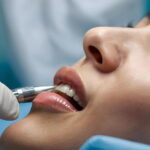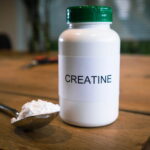Dental sedation relaxes patients who anticipate procedures with extreme anxiety. It’s recommended for various dental work that takes more than 30 minutes to perform. In addition, it’s used for patients who need to control their movements or manage their anxiety.
Oral health affects your general health in many ways. Hence, managing your phobias is essential because it can prevent you from getting the appropriate care. Meanwhile, procrastinating can lead to tooth loss, gum disease, or more costly procedures in the future.
Dental sedation is generally safe. However, it should only be done by experts with the proper equipment and setting.
What Is Dental Sedation?
Numbing and keeping a patient calm are very important to the successful outcome of a dental procedure. Sitting in a dental chair, anticipating the pain, or even just imagining the sound of the drill may be uncomfortable for some but horrifying for others.
There are three types of dental sedation: oral, nitrous gas, or intravenous (IV). Dentists manage patient anxiety by injecting a dental block to numb mouth sections or with pain free sedation. It’s necessary to inform your dentist of any medications you’re taking and any medical conditions you have before the procedure. This step can help them ensure the sedation is safe for you.
What To Expect During Oral Sedation
Oral sedation is used for mild sedation. A benzodiazepine pill or a similar drug is taken an hour before the dental procedure. During the procedure, the patient will likely feel relaxed. Under oral sedation, the patient can still reply to questions and follow instructions.
Meanwhile, this type of sedation may require anaesthesia for pain relief in cases like tooth extractions, dental surgery, or root canal.
Precautions
Some people may not be suitable candidates for oral sedation. These include individuals with the following health conditions:
1- Respiratory or lung problems, such as chronic obstructive pulmonary disease (COPD) or asthma, as sedatives can depress breathing;
2- Sleep apnea can be made worse by sedatives;
3- Certain heart conditions, such as heart failure or low blood pressure. Sedatives can lower blood pressure;
4- Liver or kidney problems, as these organs are responsible for breaking down and eliminating the sedative from the body;
5- A history of allergies or reactions to sedatives;
6- Pregnant or breastfeeding women, as the effects of sedatives on the developing fetus or nursing infant are still vague.
If you have any of the above conditions or are taking some medications, your dentist will likely recommend alternative sedation or anaesthesia, such as nitrous oxide or IV sedation.
Post-Procedure
After the procedure, the patient may feel sleepy or disoriented for a short period. Hence, they should have someone to drive them home. It’s also necessary to avoid alcohol and other sedatives for at least 24 hours after the procedure.
What To Expect During Nitrous Oxide Gas Sedation
Also known as laughing gas, this colourless and odour-free mild sedative doesn’t make you laugh. Nitrous oxide (NO) mixed with oxygen administered by a mask over the nose reduces anxiety and manages pain. The patient breathes in the mixture and should feel its effects within a few minutes.
Nitrous oxide relaxes the nervous system, so expect to be drowsy and relaxed. Under this sedation, the patient is fully conscious and can follow instructions throughout the procedure. It offers excellent sedation for people with a strong gag reflex. It’s also safe for children.
The effects of nitrous oxide are relatively short-lived and wear off quickly once the patient stops inhaling the gas or starts breathing pure oxygen. This makes it an excellent option for patients anxious about dental procedures. Alternatively, it can be used with local anaesthetics to provide better sedation and reduce pain.
Precautions
Nitrous oxide is generally considered safe for most people. However, individuals with the following health conditions may not be suitable candidates for nitrous oxide:
1- If you have respiratory or lung problems—such as chronic obstructive pulmonary disease (COPD) or asthma—nitrous oxide can depress breathing.
2- Those with temporary conditions like stuffy nose can’t have nitrous gas because absorption is unpredictable.
3- If you have severe anaemia or Vitamin B-12 deficiency, nitrous oxide can lower oxygen levels in the blood.
4- People with a history of substance abuse or mental health conditions.
5- People with methylene-tetrahydrofolate reductase deficiency.
6- Those with a history of allergic reactions to nitrous oxide.
7- Pregnant individuals—as the effects of nitrous oxide on the developing fetus or nursing infant are not well understood.
It’s essential to inform your dentist if you’re taking any medications that contain nitrates, such as nitroglycerin. These substances can interact with nitrous oxide and cause problems.
Post-Procedure
Nitrous oxide doesn’t have the lingering effects that some other forms of sedation have. To ensure nitrous oxide gas sedation is safe for you, it’s best to inform your dentist of any medical conditions or medications you’re taking before the procedure.
What To Expect During IV Sedation
Compared with oral pills and nitrous oxide, IV sedation produces a deeper effect. It provides deep relaxation and reduces pain and anxiety, making it perfect for more complex or lengthy procedures. However, vital signs like heart rate, blood pressure, respiratory rate, and oxygen levels are monitored throughout the procedure to ensure safety.
Intravenous sedation requires a skilled professional to administer it. Hence, it requires extensive training and the proper equipment. Since it requires monitoring the patient during the procedure, it’s only used in a dental office or clinic equipped to provide this level of sedation.
Intravenous sedation works fast. And unlike the first two types, minimal pain is felt through IV sedation. It’s also recommended for extended or multiple procedures because the dentist or anesthesiologist can adjust the dose safely.
Precautions
Unlike oral or nitrous oxide sedation, IV sedation candidates must be prepared for the procedure. If there are no complications with the existing medical conditions and medications, the patient is instructed to refrain from eating or drinking 6 to 8 hours before the dental procedure.
On the other hand, IV sedation isn’t suitable for the following patients:
1- Pregnant women
2- People allergic to sedatives like benzodiazepines
3- Those who suffer from sleep apnea, COPD, or asthma
In addition, it’s not recommended for those who had alcohol that could depress breathing, those with impaired organ function, and individuals with heart problems who require more evaluation.
Post-Procedure
If you’re considering IV sedation, expect residual drowsiness and temporary memory loss after the procedure.
Summary
Dental sedation is necessary when patients have a phobia, impaired gag reflex, multiple dental procedures, or extreme pain sensitivity. However, people with specific health conditions may not be suitable candidates. Nevertheless, these three types of dental sedation can help make the experience comfortable and pain-free.
Read Also
- The Future of Men’s Health: Why Telehealth Is Here to Stay
 Telehealth isn’t just a pandemic trend that faded into the background. For Australian men, it has become one of the most practical, time-saving, and stress-free ways to manage everyday health — and it’s shaping the future of how we access care. Platforms like DOCTO, an Australian online doctor and specialist telehealth service, are leading the… Read more: The Future of Men’s Health: Why Telehealth Is Here to Stay
Telehealth isn’t just a pandemic trend that faded into the background. For Australian men, it has become one of the most practical, time-saving, and stress-free ways to manage everyday health — and it’s shaping the future of how we access care. Platforms like DOCTO, an Australian online doctor and specialist telehealth service, are leading the… Read more: The Future of Men’s Health: Why Telehealth Is Here to Stay - How to Build a Simple, Clean Skincare Routine ?
 You don’t need a complicated skincare routine. It doesn’t have to be something that requires twenty different products and confusing steps. Your routine works well with just a few high-quality clean ingredients. The beauty industry keeps pushing more products, but your skin actually needs less. You only need a simple approach to get better results… Read more: How to Build a Simple, Clean Skincare Routine ?
You don’t need a complicated skincare routine. It doesn’t have to be something that requires twenty different products and confusing steps. Your routine works well with just a few high-quality clean ingredients. The beauty industry keeps pushing more products, but your skin actually needs less. You only need a simple approach to get better results… Read more: How to Build a Simple, Clean Skincare Routine ? - How Preventive Dental Care Supports Overall Health
 Have you ever wondered how a simple dental checkup could impact your entire body? Oral health is more than just a bright smile. Studies show that poor dental habits can contribute to serious health problems. Gum disease and tooth decay are linked to heart disease, diabetes, and infections. Yet, many people overlook preventive dental care.… Read more: How Preventive Dental Care Supports Overall Health
Have you ever wondered how a simple dental checkup could impact your entire body? Oral health is more than just a bright smile. Studies show that poor dental habits can contribute to serious health problems. Gum disease and tooth decay are linked to heart disease, diabetes, and infections. Yet, many people overlook preventive dental care.… Read more: How Preventive Dental Care Supports Overall Health - Seeing Clearly in a High-Tech World: A Deep Dive into Advanced Vision Care Services
 Protecting your eyesight isn’t optional—it’s essential. Modern eye care has evolved far beyond basic exams, offering advanced diagnostics, personalized treatments, and surgical innovations that keep vision sharp for life. A leading example is Intermountain Eye Center, home to specialists like Dr Fishburn Boise, where patients receive comprehensive, high-level vision care designed to preserve long-term eye… Read more: Seeing Clearly in a High-Tech World: A Deep Dive into Advanced Vision Care Services
Protecting your eyesight isn’t optional—it’s essential. Modern eye care has evolved far beyond basic exams, offering advanced diagnostics, personalized treatments, and surgical innovations that keep vision sharp for life. A leading example is Intermountain Eye Center, home to specialists like Dr Fishburn Boise, where patients receive comprehensive, high-level vision care designed to preserve long-term eye… Read more: Seeing Clearly in a High-Tech World: A Deep Dive into Advanced Vision Care Services - Why the Keto Diet Works for Some People—and Fails Dramatically for Others: An Ayurvedic Breakdown for Modern Healthcare
 The keto diet has dominated weight-loss culture for years. For some people, it produces rapid fat loss, stable energy, and improved mental clarity. For others—especially those who gain weight easily—it leads to burnout, digestive distress, rebound weight gain, high cholesterol, and a metabolism that feels slower than before. Healthcare often frames this as a discipline… Read more: Why the Keto Diet Works for Some People—and Fails Dramatically for Others: An Ayurvedic Breakdown for Modern Healthcare
The keto diet has dominated weight-loss culture for years. For some people, it produces rapid fat loss, stable energy, and improved mental clarity. For others—especially those who gain weight easily—it leads to burnout, digestive distress, rebound weight gain, high cholesterol, and a metabolism that feels slower than before. Healthcare often frames this as a discipline… Read more: Why the Keto Diet Works for Some People—and Fails Dramatically for Others: An Ayurvedic Breakdown for Modern Healthcare - How to Choose the Best Assisted Living Facility for Seniors
 Are you looking for the right assisted living facility for a senior loved one? Choosing a place can feel overwhelming. There are many factors to consider, from care services to the environment. Safety, comfort, and social opportunities play important roles in daily life. Each senior has unique needs and preferences that must be met. Understanding… Read more: How to Choose the Best Assisted Living Facility for Seniors
Are you looking for the right assisted living facility for a senior loved one? Choosing a place can feel overwhelming. There are many factors to consider, from care services to the environment. Safety, comfort, and social opportunities play important roles in daily life. Each senior has unique needs and preferences that must be met. Understanding… Read more: How to Choose the Best Assisted Living Facility for Seniors - Burn Smart, Not Hard; Shape Burn: Clean Protein for Weight Management
 You want to feel light, strong, and confident. You don’t want crash diets or fake promises. You need a plan that works with your body, not against it. That’s where Shape Burn comes in. You can burn fat without losing strength. You can eat better and stay full. You can manage weight in a way… Read more: Burn Smart, Not Hard; Shape Burn: Clean Protein for Weight Management
You want to feel light, strong, and confident. You don’t want crash diets or fake promises. You need a plan that works with your body, not against it. That’s where Shape Burn comes in. You can burn fat without losing strength. You can eat better and stay full. You can manage weight in a way… Read more: Burn Smart, Not Hard; Shape Burn: Clean Protein for Weight Management - Creatine Basics: How Much Is 5g, How Much Water You Need, and Whether Pills or Powder Work Better
 If you’ve ever walked into a supplement aisle or scrolled through fitness TikTok, you’ve probably seen people talking about creatine — usually with a shaker bottle in hand and promises of better workouts and faster gains. And honestly? They’re not wrong. Creatine is one of the most researched and effective supplements for muscle strength, recovery,… Read more: Creatine Basics: How Much Is 5g, How Much Water You Need, and Whether Pills or Powder Work Better
If you’ve ever walked into a supplement aisle or scrolled through fitness TikTok, you’ve probably seen people talking about creatine — usually with a shaker bottle in hand and promises of better workouts and faster gains. And honestly? They’re not wrong. Creatine is one of the most researched and effective supplements for muscle strength, recovery,… Read more: Creatine Basics: How Much Is 5g, How Much Water You Need, and Whether Pills or Powder Work Better









